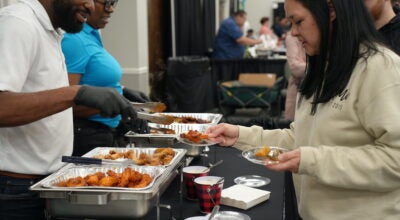Savory salads won’t weigh you down
Published 1:18 pm Tuesday, June 16, 2009
As the hot and humid weather sets in, we begin to yearn for cool foods and beverages to quench the heat.
Cold salads are great side dishes for summer picnics or as a complete meal. One trick to keep in mind is to be sure to include fruits and vegetables in water content.
Watermelon, apples, kiwi, grapefruit, coconut and berries are full of sweet juices that will help keep the body hydrated. Salad greens, especially lettuce, spinach and collard greens also contain high amounts of water and antioxidants to help protect the eyes against damaging UV light.
With the abundance of delicious fruits and vegetables this time of year, salads can add interest, flavor and imagination to your meals.
When building your salad, first start with a large bed of salad greens. Be creative and add some spinach, escarole or romaine lettuce.
Next add a variety of your favorite chopped vegetables. Green beans, snap peas, carrots, broccoli, cauliflower, zucchini, asparagus, artichokes, tomatoes and cucumbers are all very low in calories. The natural sweetness of fruit can also add the burst of flavor we crave and help us avoid pouring on excess high-calorie dressing.
If you choose to make a meal of your salad, it is more filling to add some protein sources such as boiled eggs, lean meat, shrimp, tuna, beans or nuts.
Just remember you should practice moderation. A sprinkle of cheese or about one–eighth cup of nuts will give your salad flavor and protein without excess calories.
The last ingredient of most salads is salad dressing. This is the part where many a good salad has gone bad.
The serving size for most salad dressings is 2 tablespoons. One tablespoon usually has between 50–80 calories. Low–fat and fat–free salad dressings are lower in calories, but are usually high in sodium and may lead to thirst. A salad with a variety of fruits and vegetables may not need anything but some freshly squeezed lemon or lime juice.
Jennifer Dutton is a regional extension agent with the Alabama Extension Office. She can be reached at JLD0021@auburn.edu.









